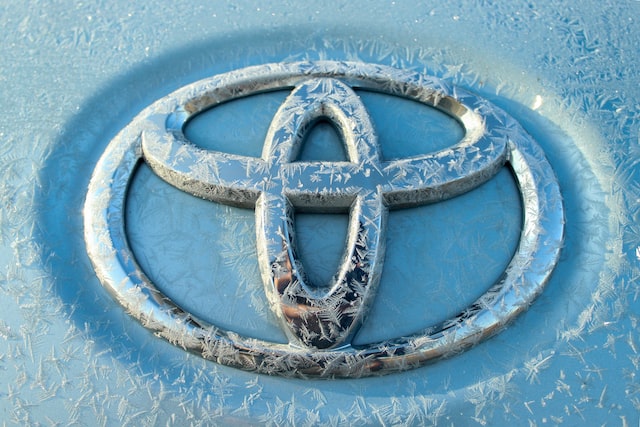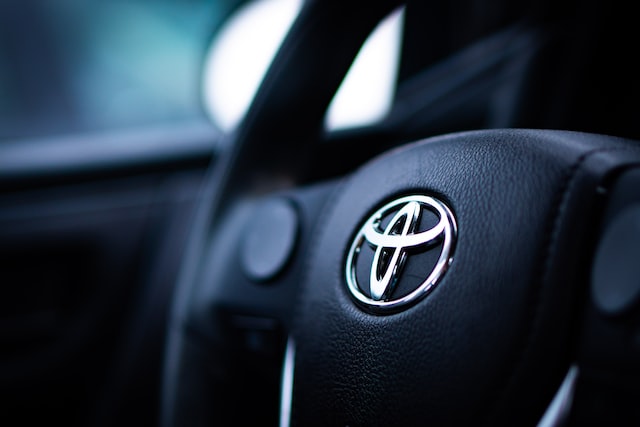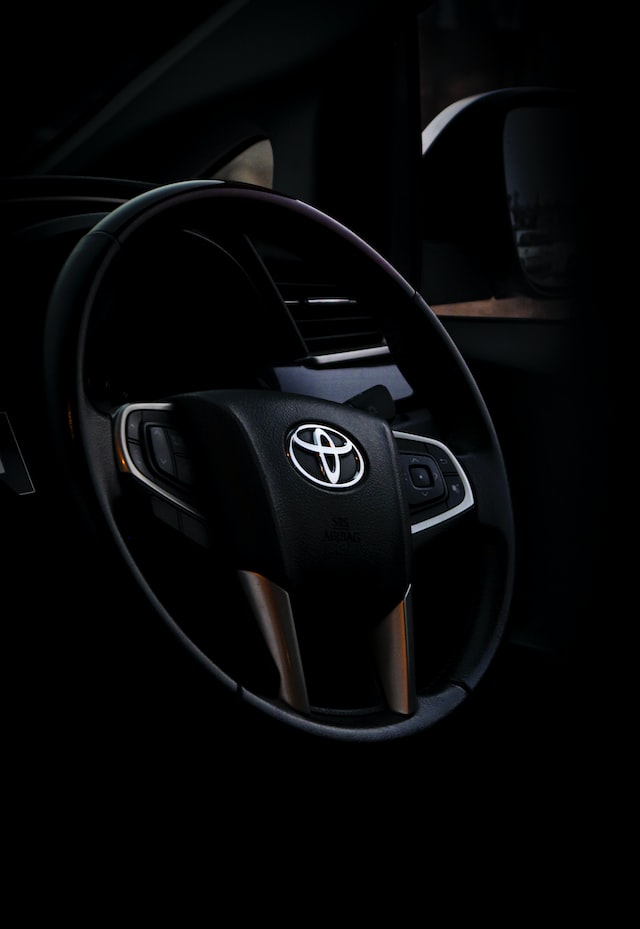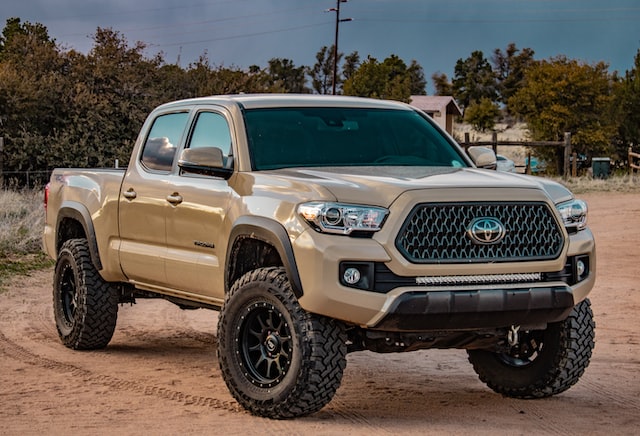Toyota Motor Corporation, a Japanese multinational automobile manufacturer listed on the Tokyo Stock Exchange, Nagoya Stock Exchange, New York Stock Exchange and London Stock Exchange, is a member of the Toyota Group. It is headquartered in Toyota City, Aichi Prefecture and Bunkyo-ku, Tokyo, Japan. The company was founded by Kiichiro Toyoda (1894-1952) and is currently headed by Akio Toyoda, who is ranked 10th in the Fortune 500 list for 2020.

In 2019, it ranked second in the world in terms of vehicle sales, with approximately 10.74 million units. Its largest single market is the U.S. market, contributing approximately 2.76 million units for the year. In 2020, it will be ranked first in the world with 9.52 million units. Its largest market will continue to be North America, which will contribute around 2.31 million units for the year, and China, which will contribute around 2 million units.
Toyota's history
Kiichiro Toyoda was born in 1895, and his father, Satoshi Toyoda, was both a famous Japanese textile king and one of the country's most famous "inventors".
In fact, the history of Toyota goes back to 1896, when the 29-year-old invented the "Toyota steam loom". His loom was not only the first ever automatic loom in Japan that did not rely on human labour, but also differed from previous looms in that it could be operated by one stopper for three or four machines at the same time, which greatly increased productivity. Even the world's number one textile machinery manufacturer at the time, the British company Pratt & Whitney, asked Saji Toyoda to transfer the patent rights, and Saji eventually gave up the rights to use the patent in 1929 (Showa 4) for £100,000 (one million yen at the time).

Entering the automotive field
In 1930, at the age of 63, Satoshi Toyoda died. He left his children a thriving cotton spinning mill with nearly 10,000 employees. Sajichi Toyoda's eldest son, Kiichiro Toyoda, had a keen interest in the world outside Japan.
He visited Europe and the United States, where he was struck by the dramatic industrial revolutions in Europe and the United States, and was even more enthused by the automobile. He was convinced that the automobile would be the key vehicle of the future.

By the time Kiichiro Toyoda began to develop cars, General Motors and Ford Motor Company in the United States had already become world-famous. In terms of mass production technology and marketing operations, the two companies were strong enough to outshine all other car manufacturers in the world, and each had opened its own car assembly plant in Japan.
However, Kiichiro Toyoda did not take the moves of the two American car giants too seriously. He devoted himself to the creation of a domestic automobile industry based on mass production. Within the Toyota Automatic Loom Works, a completely new department, ---- Automotive Division, was born.
On August 28, 1937, the Automotive Division was declared independent from the Toyota Automatic Loom Works, and Toyota Motor Vehicle Industries, Ltd. embarked on a new course as a new company with a capital of 12 million yen.
Production of the aa car began at the newly built factory, with an initial output of only 150 cars per month. One year later, despite the opposition, Kiichiro Toyoda, who had strong confidence in the Japanese automobile industry, decided to invest a huge sum of 45 million yen to build a production system with a monthly capacity of 2,000 cars, which was almost four times the company's capital.
In 1939, the company set up a battery research institute and began work on the development of electric cars.
In 1940, Toyota produced some 15,000 cars, 98% of which were passenger and cargo vehicles. That year it introduced a new, more compact sedan with a 4-cylinder 2.2-litre 48 hp engine that was closer in appearance to the Swedish Fu pv60.

Toyota had little experience with cars, though. But held fast to the credo that it was easier to imitate than to create, and if improvements could be given along with the imitation, so much the better. In keeping with his father's philosophy, Kiichiro knew that first and foremost he had to produce safe, solid, economical and traditional cars, not innovative products. So, for a long time, all Toyota cars had this character.
In 1962, Toyota began its foray into Europe. In that year, Toyota's production exceeded the million marks for the first time.
The opening of the Meishin Expressway (Nagoya to Kobe) in 1965 inaugurated the era of high-speed road transport in Japan. After the war and the post-war years, the Japanese automobile industry was arguably the least internationally competitive of all Japanese industrial sectors at the time. But Toyota foresaw the massive international trade and liberalisation of capital that would soon sweep through Japan, and in anticipation of the new era, it stepped up its efforts to develop new vehicles with higher performance, while at the same time making great efforts to increase production capacity and improve quality. All these efforts finally bore fruit when Toyota was awarded the deming prize in 1965. In the same year, the Japanese government lifted the tariff barriers on imported cars and from then on Toyota began a real battle with foreign car manufacturers in terms of both performance and price.
The 2021 Guangzhou Auto Show saw the official launch of the new compact SUV Frontier by GAC Toyota.
Opportunity for development
In 1973, along with the outbreak of the 4th Middle East War, the world economy encountered its first oil crisis. For Japan, which relied almost 100 per cent on imported oil resources, the entire economic activity was greatly affected and immediately plunged into great disruption. The hyperinflation of the early post-war years swept back into Japan and demand for automobiles fell into disarray. In this situation, Toyota set its sights on a new starting point in terms of limited resources and launched a vigorous campaign to save resources, save energy and reduce costs.
Eiji Toyoda, cousin of Kiichiro Toyoda, always believed that the car was not a "luxury" but a real necessity for society. In the face of the pessimism that gripped Japanese society, Toyota held on to the word "patience" and prepared itself for the day when it would regain its strength.
The two oil crises of 1973 and 1979 changed the structure of demand for cars in the United States to a great extent, as the choice shifted from large cars to smaller, more fuel-efficient vehicles. In order to get out of this predicament, the US car manufacturers have repeatedly urged the government and Congress to impose restrictions on the import of Japanese cars as soon as possible. At the same time, they have repeatedly asked Japanese automakers to invest in factories in the United States so that they can compete with American automakers on the same footing. In 1981, the agreement on the autonomous restriction of car exports to the US came into effect. In order not to lose the American car market, and out of concern that American consumers, who were particularly fond of small cars with good fuel efficiency, would be limited in their choices, Japanese car manufacturers began to make the issue of establishing production facilities in the United States a new business issue for themselves.
In this case, Toyota decided to enter into a production partnership with General Motors in the United States, which would not only create local jobs, but also allow the transfer of small car production technology to the American automaker.

In 1983, in order to compete with Honda's Accord series of cars in the North American market, Toyota launched the Camry line, which has since gone from strength to strength, becoming almost Toyota's most popular model apart from the Corolla, developing into its eighth generation. And the latest generation of the Camry has been confirmed to be built in China.
On 20 July 2016, the 2016 Fortune 500 came out and Toyota Motor Corporation was ranked 8th.